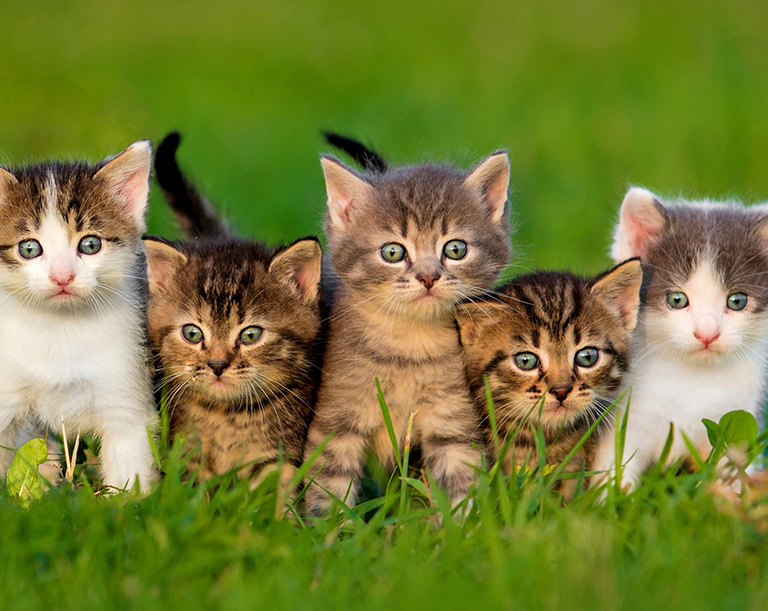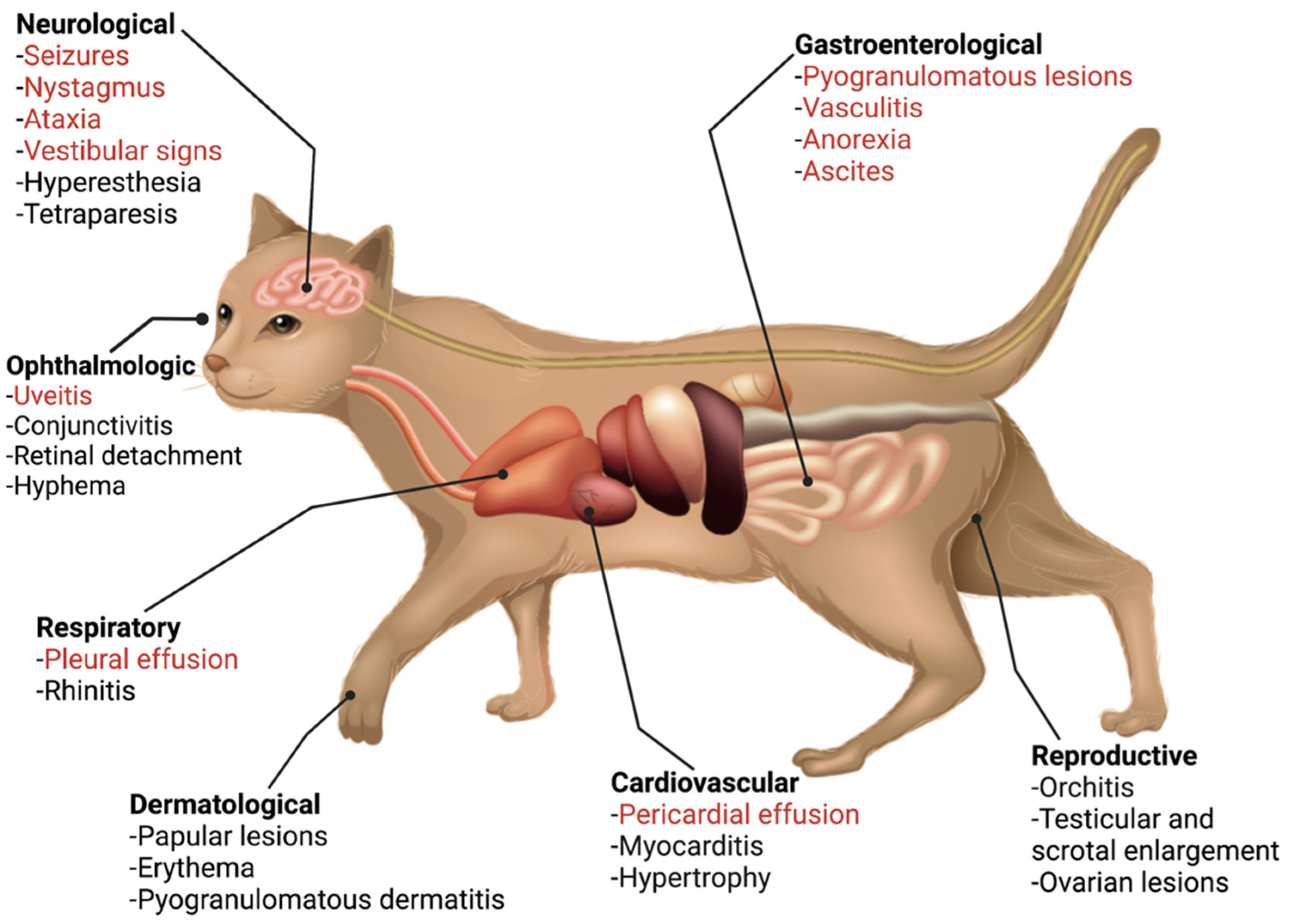Introduction:
Feline Infectious Peritonitis (FIP) is a devastating and complex disease that primarily affects kittens and young cats. In this comprehensive article, we will explore the causes, symptoms, diagnosis, treatment options, and prevention strategies for FIP in kittens. By gaining a deeper understanding of this condition and its management, cat owners and veterinarians can work together to provide effective care and improve the overall well-being of kittens affected by FIP.
FIP in Kittens: An Overview:
FIP is caused by a mutated form of the feline coronavirus (FCoV), which leads to an abnormal immune response in certain individuals. Kittens are particularly susceptible to developing FIP due to their immature immune systems. FIP can manifest in two forms: the wet or effusive form, characterized by fluid accumulation in the abdomen or chest, and the dry or non-effusive form, which affects various organs in the body.

Recognizing the Symptoms of FIP in Kittens:
Identifying the symptoms of FIP in kittens is crucial for early detection and intervention. Common signs may include:
- Gradual Weight Loss:
Kittens with FIP may experience unexplained and gradual weight loss despite a good appetite.
- Poor Growth and Development:
Affected kittens may exhibit stunted growth, delayed development, and failure to thrive compared to their littermates.
- Lethargy and Weakness:
Kittens with FIP may appear lethargic, weak, and have a reduced level of activity compared to healthy kittens.
- Distended Abdomen or Difficulty Breathing:
In the wet form of FIP, kittens may develop a distended abdomen due to fluid accumulation or experience difficulty breathing due to fluid accumulation in the chest.
Recommended:
- Petco Review: The Power of Together
- PetSmart Review: Where Pets Inspire Us
- Hill’s Pet Nutrition Review: Pioneering Pet Health and Nutrition
- Royal Canine Review: Tailored Nutrition for Every Pet
- Chewy Review: Pet Care at Your Doorstep
Diagnosing FIP in Kittens:
Accurate diagnosis of FIP can be challenging, and a combination of clinical signs, laboratory tests, and imaging techniques may be necessary. These may include:
- Physical Examination:
The veterinarian will conduct a thorough physical examination, assessing the kitten’s overall health, body condition, and any specific symptoms associated with FIP.
- Blood Tests:
Blood tests, including antibody and PCR tests for feline coronavirus, can help determine if the kitten has been exposed to the virus. However, these tests alone cannot confirm a diagnosis of FIP.
- Analysis of Fluid Accumulation:
If fluid accumulation is present, a sample may be collected and analyzed to assess its characteristics, such as protein levels and cell counts. These findings can support a diagnosis of FIP.
- Imaging Techniques:
Radiographs (X-rays) or ultrasound may be used to evaluate the presence of fluid in the abdomen or chest, as well as to assess the condition of affected organs.
Treatment Options for FIP in Kittens:
Unfortunately, there is no definitive cure for FIP, and treatment focuses on supportive care and managing symptoms. Treatment options may include:
- Palliative Care:
Supportive measures such as providing a comfortable environment, ensuring proper nutrition, and addressing pain or discomfort can help improve the kitten’s quality of life.
- Medications:
Certain medications, such as immunosuppressive drugs or antiviral medications, may be used to manage symptoms and slow down the progression of the disease. However, their effectiveness is limited.
- Experimental Therapies:
In some cases, experimental therapies, such as antiviral drugs or immunomodulatory agents, may be considered. These therapies are still under investigation and should be discussed with a veterinarian familiar with FIP.
Preventing FIP in Kittens:
Prevention plays a crucial role in managing FIP in kittens. Here are some preventive strategies:
- Vaccination:
Vaccination against feline coronavirus is available, but its efficacy in preventing FIP is debated. Consult with your veterinarian to determine the appropriate vaccination protocol for your kittens.
- Minimizing Stress and Overcrowding:
Reducing stress and maintaining a clean and well-ventilated environment can help prevent the spread of feline coronavirus and minimize the risk of FIP.
- Isolation and Quarantine:
Isolating new kittens or cats from the general population, especially if they come from unknown backgrounds, can help prevent the introduction of the virus into a household or breeding facility.
- Responsible Breeding:
Responsible breeding practices, including screening for feline coronavirus and avoiding breeding cats with a history of FIP, can help reduce the incidence of FIP in kittens.
Conclusion:
FIP is a devastating disease that primarily affects kittens and young cats. While there is no definitive cure for FIP, early recognition, supportive care, and preventive measures can help improve the well-being of affected kittens. By understanding the causes, symptoms, and treatment options discussed in this article, cat owners and veterinarians can work together to provide the best possible care for kittens affected by FIP.
References:
- Addie, D., & Belák, S. (2020). Feline infectious peritonitis: ABCD guidelines on prevention and management. Journal of Feline Medicine and Surgery, 22(5), 423–443.
- Hartmann, K. (2014). Feline infectious peritonitis. Veterinary Clinics: Small Animal Practice, 44(5), 1105-1122.
- Pedersen, N. C. (2019). A review of feline infectious peritonitis virus infection: 1963-2008. Journal of Feline Medicine and Surgery, 11(4), 225-258.
- Ritz, S., Egberink, H., & Hartmann, K. (2015). Feline infectious peritonitis: New insights into an old disease. Veterinary Journal, 201(2), 121-129.



